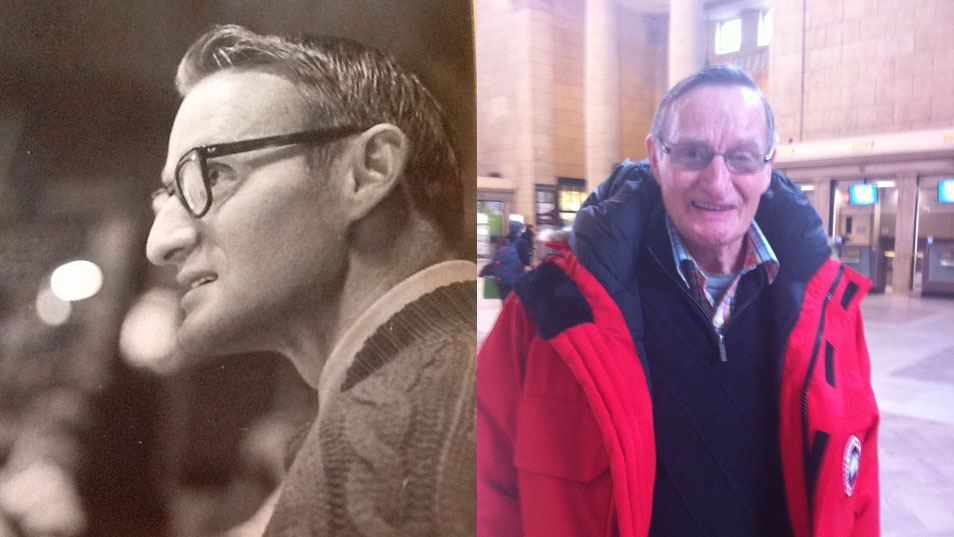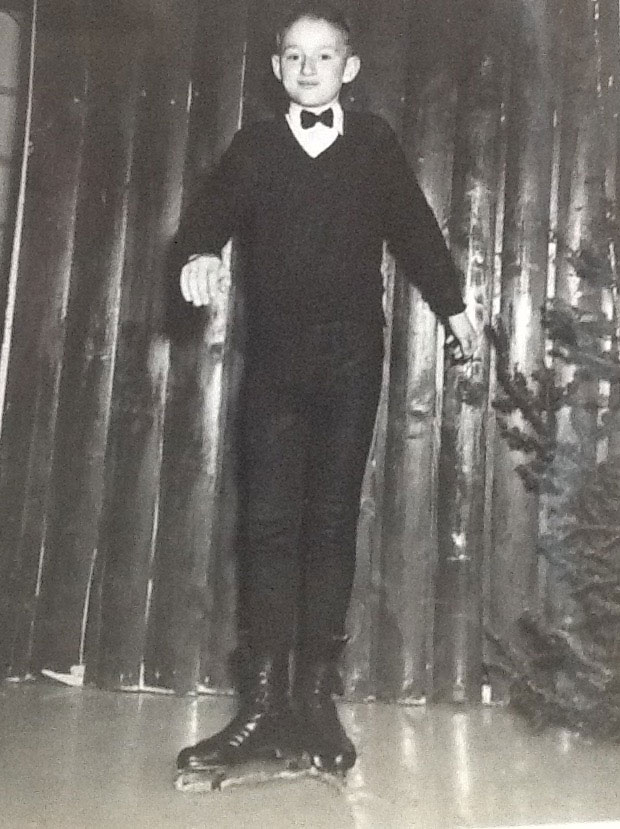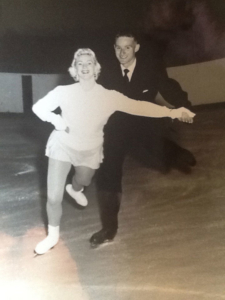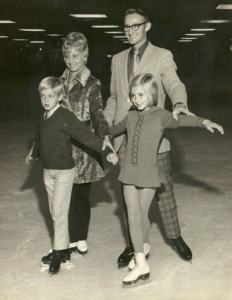Skate Maker to the Stars
Believe it or not … John Knebli never set foot on the ice in a pair of skates, yet he contributed more to skating than many of its champions.
Born in Hungary (Roumania) in 1904 and educated there, he became a Master Craftsman in Orthopedic Shoemaking specializing in the properties and tanning of leather, anatomy of the foot and body, the study of kinisthetics, walking, skeletal development and musculature.
When he immigrated to Toronto in 1930, all those talents came with him, although many of those early years found him scraping by to make ends meet. He did everything and anything … from working on a farm to delivering milk … and finally had enough money saved to dream about opening his own shop. By 1944, in partnership with his beloved wife, Elizabeth, John’s dream came true when he launched his own shoe store specializing in children’s shoes, soccer, and hockey and roller-skating boots.
His career hit a turning point in 1948 when a skating coach convinced him to make skating boots for a student with problem feet, a challenge he at first refused because he didn’t understand a skater’s needs or how to build a boot to deal with them.
Gerry Blair, a successful coach in the Toronto area, brought one of his students to the shop. It was a young Paul Tatton (see blog …), a talented up and comer, but like most skaters, he had foot problems that made wearing over-the-counter skates a disaster. Young Paul’s feet needed special attention, boots with strength and flexibility that were customized to fit him and his problem feet.
Gerry was convincing … and John … always with an eye to research, creativity and business opportunities … finally accepted the challenge when he received a sample pair of boots to take apart so he could study their construction. As the story goes, after fastidiously pulling the boots apart, he said, “I can do better than that!” and promptly began the scientific study of designing and building quality skating equipment.
Over the years, John, or Mr. Knebli, or Papa K, as he was lovingly called, developed a philosophy about his masterful work.
The boot should be made to fit:
- The foot
- The person wearing it
- The blade attached to it
- Its use.
To do this, he was meticulous in his measurements of the foot: the width at the ball, the width at the ankle, the length of the arch, the height of the arch, and the length of the big toe were important parts of the equation.
But those weren’t the only things he considered in his formula.
He thoroughly studied skating and skaters.
By continually dropping in on skating sessions around the city, often with his young daughter Elizabeth in tow, he treated those visits as if they were his own scientific laboratories. Sitting rink side for hours, by watching and studying the dynamics of the sport and how the body needed to move, he realized that skating was nothing like walking where the point of balance is at the back of the arch at the start of the heel. In skating he observed that balance is further forward at the end of the ball of the foot, the body leaning to ease into the push-off.
Mr. K also realized that the height of the heel shifted the point of balance and was unique to every skater, a discovery that led him to further calculations in building the boot by considering the athlete’s body mass and weight distribution as well as their body stance.
A designer, innovator, and true fan of figure skating, Mr. K was constantly investigating how to make skating boots better.
His low-cut boot design was revolutionary.
Until then the widely-held belief was that in order to give maximum support to the ankle, the boot had to be high. Mr. K didn’t buy it for a second. Initially his motivation to build a shorter boot was all about aesthetics, believing that a shorter boot elongated the leg and made a prettier picture on the ice. To create the additional strength needed for the new look, he combined the low-cut design with stronger leathers and finally, around 1954-56, made his first pair of low-cut boots for future Canadian, World and Olympic Pair Champion, Barbara Wagner.
His development of specialized leather to withstand the cold and dampness and to enhance the boot’s strength became a significant part of his success. With his previous knowledge of leathers and their properties, he worked with tanners at Braemore Leathers in Cambridge, Ontario to develop the quality of leather he wanted for the uppers and to create a chrome finished leather sole for the boot’s base to deal with icy cold conditions.
His never-ending attention to detail around the quality of his boots also led Mr. K to other innovations, including developing specialized machinery to fulfil the customized orders that came to him from around the world.
Along with Coach Ellen Burka, he also invented a free skating blade for her daughter, future World Champion Petra Burka, which ultimately became known as Wilson’s Pattern 99, THE free skating blade for champions.
Throughout his outstanding career, John crafted boots for many other Canadian champions and World and Olympic medalists; some of his most famous clients included Brian Orser, Barbara Underhill, Paul Martini, Toller Cranston, and Peggy Fleming.
As stated in his nomination to the Skate Canada Hall of Fame, “Knebli’s dedication to his craft led him to shape the sport of figure skating one skate at a time.”
Mr. K passed away in Toronto in 1997 at the age of 92.
Skate Canada will officially induct John Knebli into the Skate Canada Hall of Fame in the Builder category at the 2015 Annual Convention and General Meeting in Winnipeg.
(Thanks to Mr. K’s daughter, Elizabeth, for sharing many details about this remarkable man’s career.)






